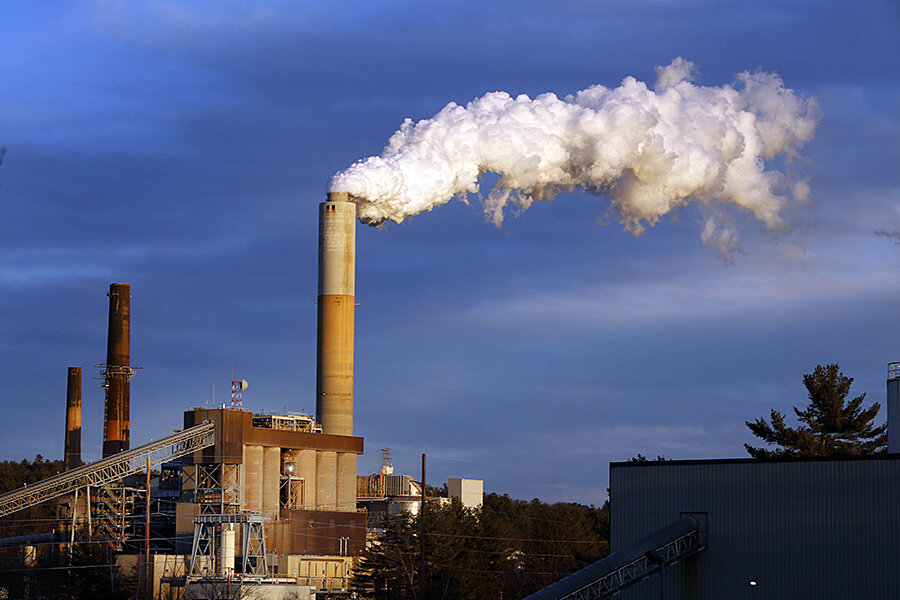Your utility is about to get a makeover. Here's why.
Loading...
By now, the energy community has had a chance to take a hard look at President Obama’s long-awaited Clean Power Plan, which he unveiled to a crowd of scientists, business leaders, and policymakers in the East Room of the White House last month.
The final rule is 1,560 pages long, but its intent is simple: to set carbon pollution standards for existing power plants in each state, offer a broad menu of options to meet those standards, then get out of the way. The Environmental Protection Agency estimates that the Clean Power Plan will reduce power plant emissions 32 percent overall by 2030.
Much has already been written about the politics of the rule, which are unfolding predictably. What’s drawn less attention — but will ultimately be far more consequential — is how the Clean Power Plan will nudge the utility industry, a sleeping giant worth $2.2 trillion globally, to shift its operating model for the first time in nearly a century.
Here’s how:
Utilities will bring fringe energy technologies into the mainstream
One way utilities can comply with new carbon standards is to replace fossil fuel power plants with renewable energy. The Clean Power Plan even incentivizes it.
That means we’ll see utilities building large-scale wind farms and solar arrays, particularly as they get cheaper to manufacture. Others will launch community solar projects, where their customers can buy a stake in a solar farm. Some utilities will even offer to set up rooftop panels — either by themselves, or through partnerships with solar installers.
As the power grid becomes increasingly dependent on variable energy sources like wind and solar, utilities will also have a reason to invest in battery technologies, which will allow them to store up power when it’s abundant and release it when it’s not.
Of course, for a lot of power companies, the most cost-effective way to lower carbon emissions won’t be to build clean energy or buy energy storage; it will be to reduce demand for energy in the first place. That used to be a matter of incentivizing customers to buy more energy-efficient hardware. But now that CFLs and Energy Star appliances are ubiquitous, utilities are increasingly focused on changing people’s behavior — using data analytics to help homes and businesses understand their energy use, and motivating them to use less.
The relationship between utilities and consumers will change
What that amounts to is a new relationship between utilities and the people they serve. With technologies like energy reporting and community solar, power companies will increasingly see their customers as partners in hitting regulatory targets, including the Clean Power Plan.
Consumers are on board. Most of us already expect personalized offers and insights from our service providers; think overage alerts from phone companies, and online budgeting tools from banks. The larger trend is that we want control and customization. And it’s true for energy. Volumes of market research show that we want our power companies to let us choose how we use energy, and how much we use, and where it comes from.
Utilities are investing in technologies to give us that choice. They’re also restructuring accordingly. When I founded Opower in 2007, just one utility in America had a Chief Customer Officer. At an event I hosted earlier this year, there were 26 utility CCOs in the audience. Worldwide, utilities are starting to reposition themselves as energy advisors — trusted sources of information and services, rather than electrons alone.
The Clean Power Plan will kick utility innovation into gear
That transition is about more than regulatory compliance. It’s also about revenue. In an era when utilities are increasingly incentivized to sell less electricity, they’ll need to find creative ways to turn a profit.
The answer might be selling solar services. Or storage. Or more efficient appliances. Or charging stations for electric cars. Or data analytics. Each utility’s strategy will be a little different, depending on its state’s energy laws and its energy mix. What will unite almost all utilities is that for the first time in history, Americans won’t be buying and using electricity the same way their parents did.
That’s the real power of the Clean Power Plan. Yes, it will lower carbon emissions, but it will also push energy companies to innovate. They’ll need to keep investing in new technologies. They’ll need to retool their business models for a century where the old way of doing things no longer makes sense. The long-term benefits will be bigger and better than any one rule could accomplish.
Put another way: there are things that exacerbate climate change, and there are things that mitigate it. Most of us put utilities on the bad side of the equation.
It might not be that way for long.
Alex Laskey is president and cofounder of Opower, a Virginia-based company that makes cloud-based software for the utility industry.
[Editor's note: A previous version of this article incorrectly stated that the finalized Clean Power Plan was unveiled "earlier this month." It was unveiled in August, not September.]





